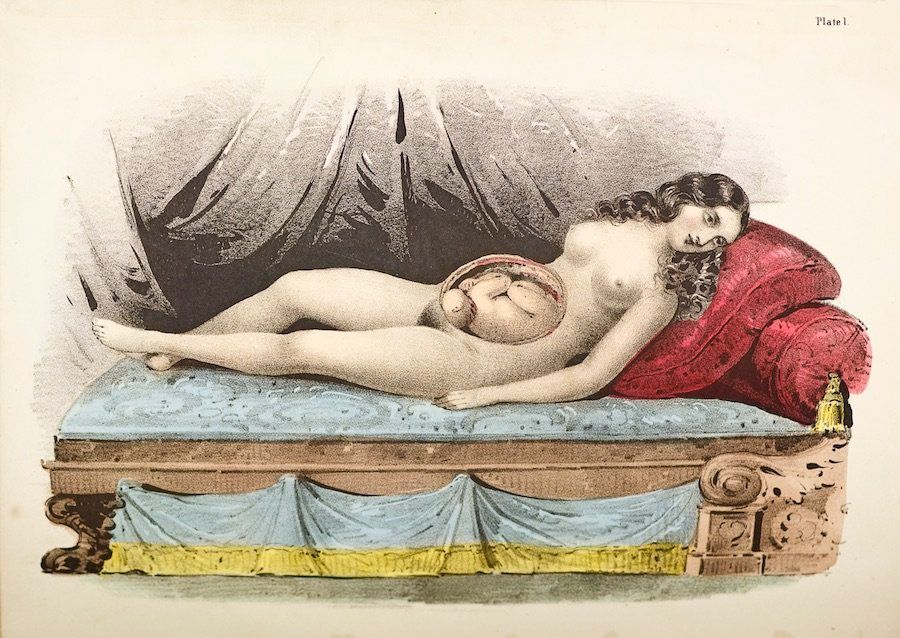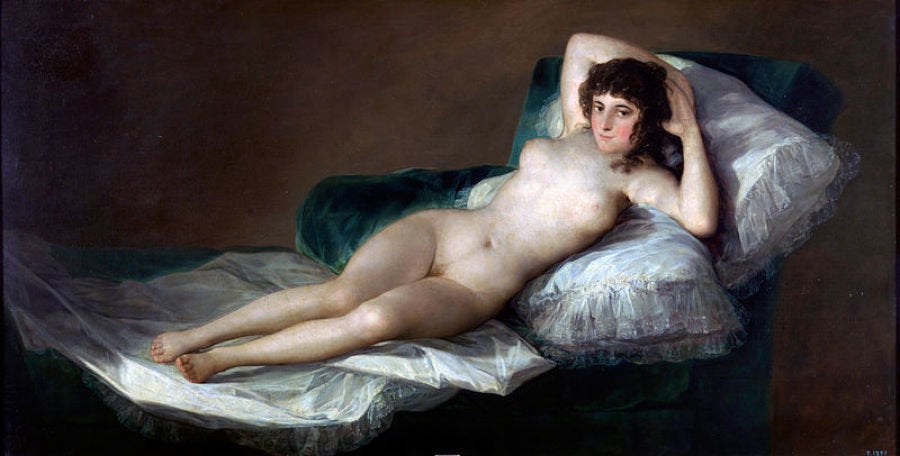She's called the "Anatomical Venus" and rests in peace, beneath a Venetian glass and rosewood case, in a medical museum called La Specola, which opened in Florence, Italy, in 1775.
She is beautiful, endowed with supple flesh, touchable curls that create a pillow around her head, and even a string of pearls around her neck. Her head is tipped back ecstatically, resembling a moment of spiritual rapture from one angle, an intense orgasm from another. She is, in her peaceful repose, as physically enchanting as Sleeping Beauty, save for the fact that her innards and guts are spilling out.
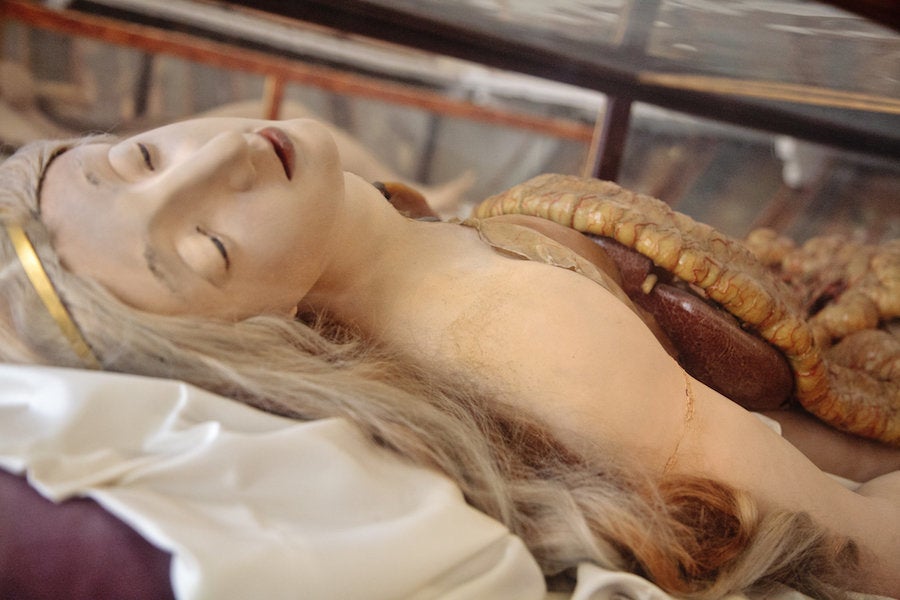
Today we think of science as white coats and pristine labs, objective diagrams and empirical evidence. Human bodies are abstracted into bones and blood, muscles and nerves, symptoms and responses. Medical depictions reflect them as such, sans soft skin and pursed lips and golden headbands.
Thus the bizarre beauty of the "Anatomical Venus," created by sculptor Clemente Susini between 1780 and 1782, comes off as disgusting in a contemporary context. Exposed in every possible sense of the word, the Venus is female beauty objectified to grotesque extremes. Her eyes gently shut and body spread wide, it's almost as if femininity is considered most beautiful when lifeless, that a woman is most desirable as an aesthetically pleasing spread of inactive parts.
It's this jarring, immediate reaction that shook intellectual historian Joanna Ebenstein to the bone. In an interview with The Huffington Post Arts, she admitted that she initially couldn't imagine how a thing that appears, to a contemporary viewer, so utterly repulsive and strange, was once a sanctioned, accepted educational tool. What did the world look like when this Anatomical Venus was a sensible model of the human body? And what has changed since that renders this old world view so impossible to understand?
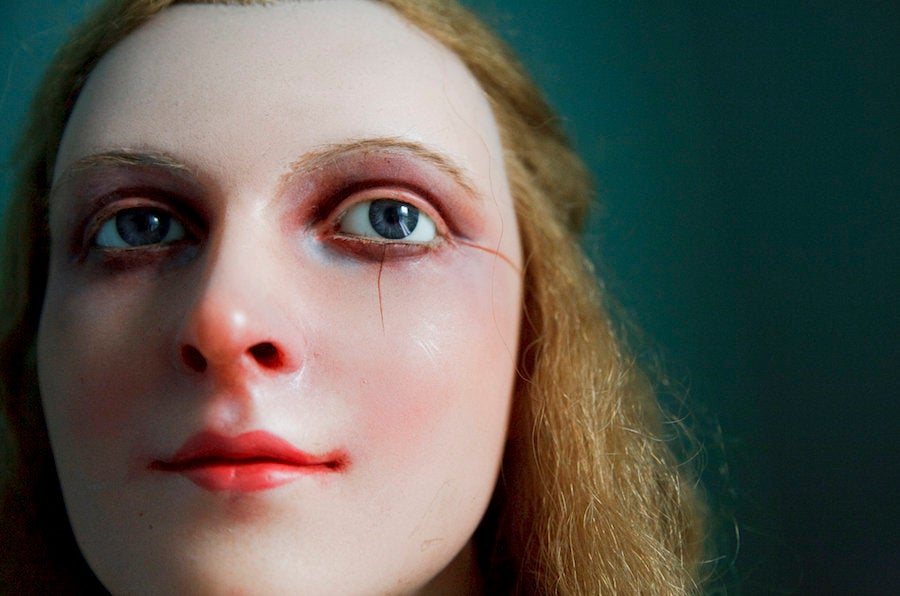
Ebenstein became fascinated with the Venus after visiting La Specula as part of a self-described pilgrimage, visiting the most important medical museums in the Western world. For some reason, the Anatomical Venus -- one of several models housed in the museum's rooms, all filled with three-dimensional human diagrams meant to educate not just doctors but men, women and children -- stood out.
"Part of the reason the Venus is so strange, I think, is because it flickers on all of these edges, and that flickering is very exciting to some people, very disturbing to others," Ebenstein said. "The edges it flickers on are traditional binary divides between things we normally consider completely irreconcilable, things like art and science, beauty and death, spectacle and education, alive yet not alive."
This encounter led Ebenstein on another journey through Europe, to document as many similarly peculiar Venus figures as possible. Her findings are compiled in an enchanting and repulsive book titled The Anatomical Venus: Wax, God, Death & the Ecstatic.
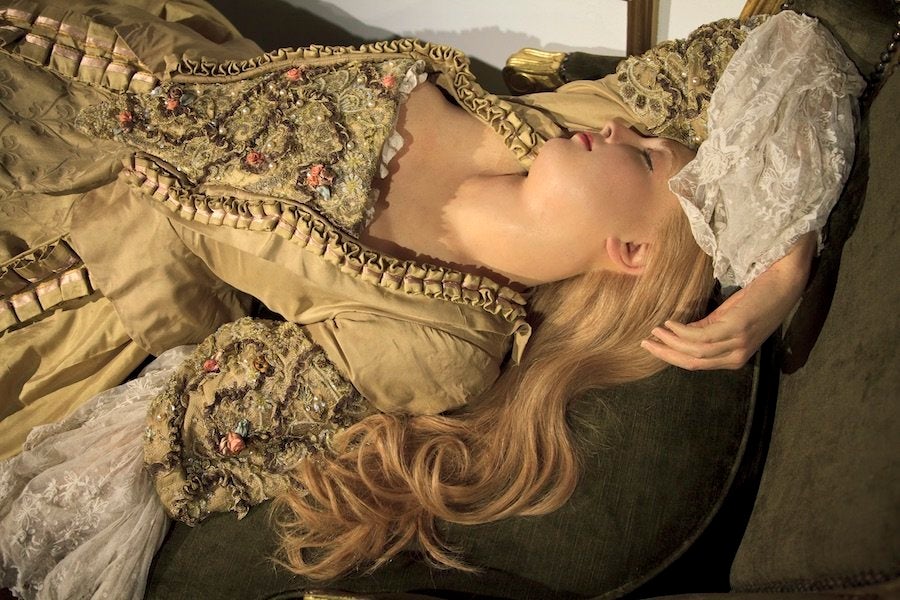
"Although your brain knows they’re not alive, they still feel as if they’re about to move," Ebenstein said of the models. "Wax mimics flesh in this completely persuasive way. Even though you know otherwise, there is another voice inside you ... Your rational mind is telling you one thing and your senses are telling you something else. It’s an intriguing place to be."
Ebenstein is the founder of the Morbid Anatomy blog and the creative director of the Morbid Anatomy Museum, based in Brooklyn, New York. The space, Ebenstein explained, provides a place for objects that otherwise would have been dropped from the historical record, because they just don't fit in with our contemporary understanding of the world, broken up into specific disciplines and fields of knowledge.
Today, science and art are often visualized at opposite ends of the knowledge spectrum, one objective and the other subjective. Similarly, spirituality and sexuality often remain separate, one sacred and one profane. But centuries ago, when the fair-skinned and bloody-bellied Venus came to be, such distinctions hardly held true.
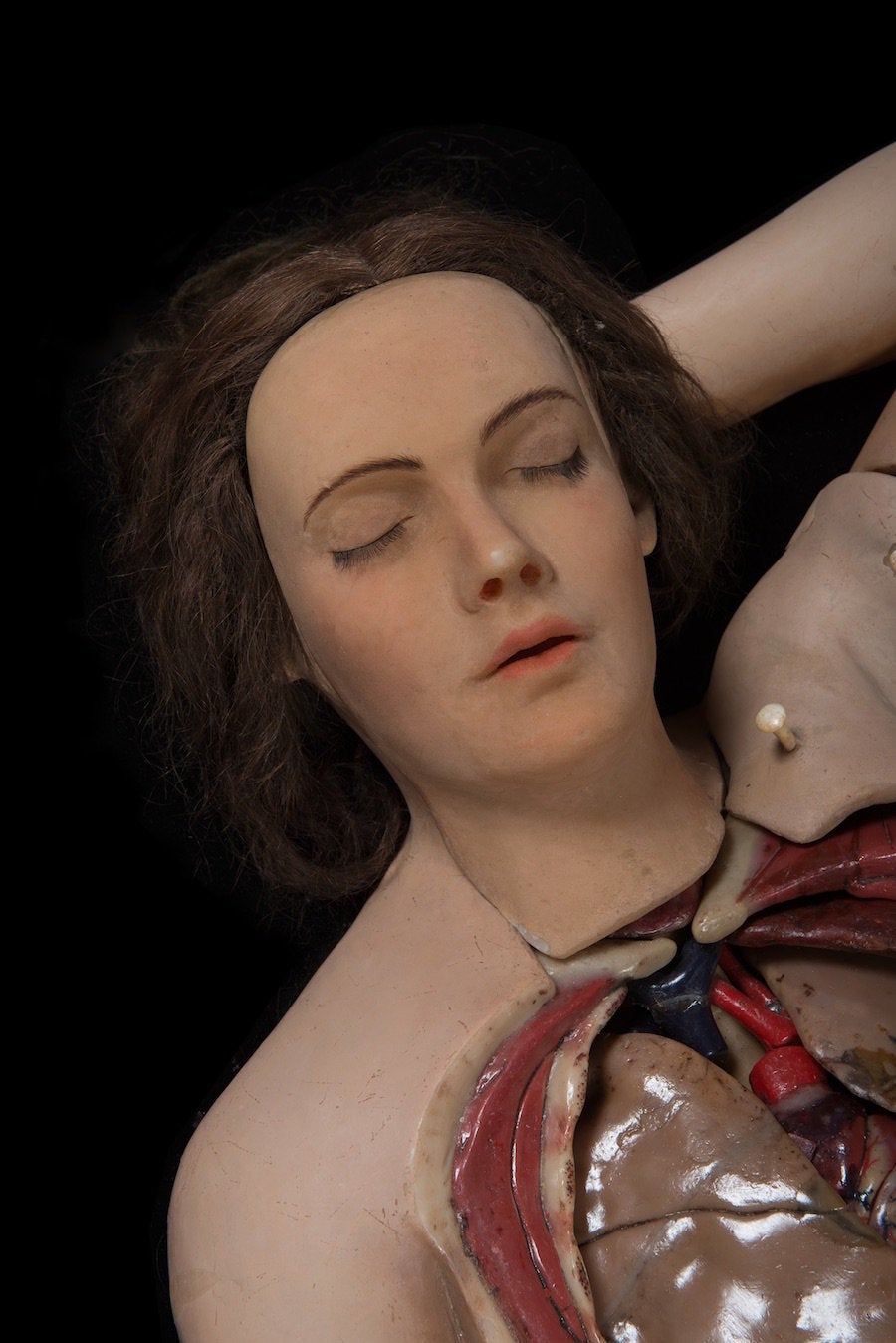
While human dissections are now primarily associated with medical inquiries, Ebenstein clarified that artists were originally the most active dissectors in the game. What's more, the distinction itself between artist and scientist was tenuous, at best. Take Leonardo da Vinci, known for peeking inside bodies to examine their muscular makeup in order to perfect his depictions of the human form.
The fluid relationship between art and science helps illuminate why in the world a medical diagram would be created with such intense adornments. Beyond Leonardo, there was also God, the artist who created all humans in his image, or so the dominant belief went. A rendering of human life, many felt, conveyed the power of God's gift.
The hugely different spiritual climate in the 18th century helps explain why so many of the waxen women wear expressions contemporary viewers might describe as orgasmic. "It is my belief they were not interpreted sexually at the time," Ebenstein clarified. "When you go into Italy's churches today you see all of these figures, men and women, with their heads thrown back in what looks like sexually ecstasy. But it doesn’t read that way to Catholics."
Ebenstein spoke in particular about Gian Lorenzo Bernini's baroque sculpture "The Ecstasy of Saint Teresa," which features a seemingly erotic expression. She described an excerpt from Teresa's 16th-century autobiography, in which the saint is visited by a divine spirit. It reads: "He appeared to me to be thrusting my heart and to pierce my very entrails; when he drew it out, he seemed to draw them out also, and to leave me on all fire with a great love of God. The pain was so great that it made me moan, and yet so surpassing was the sweetness of this excessive pain that I could not wish to be rid of it ... The pain is not bodily but spiritual."
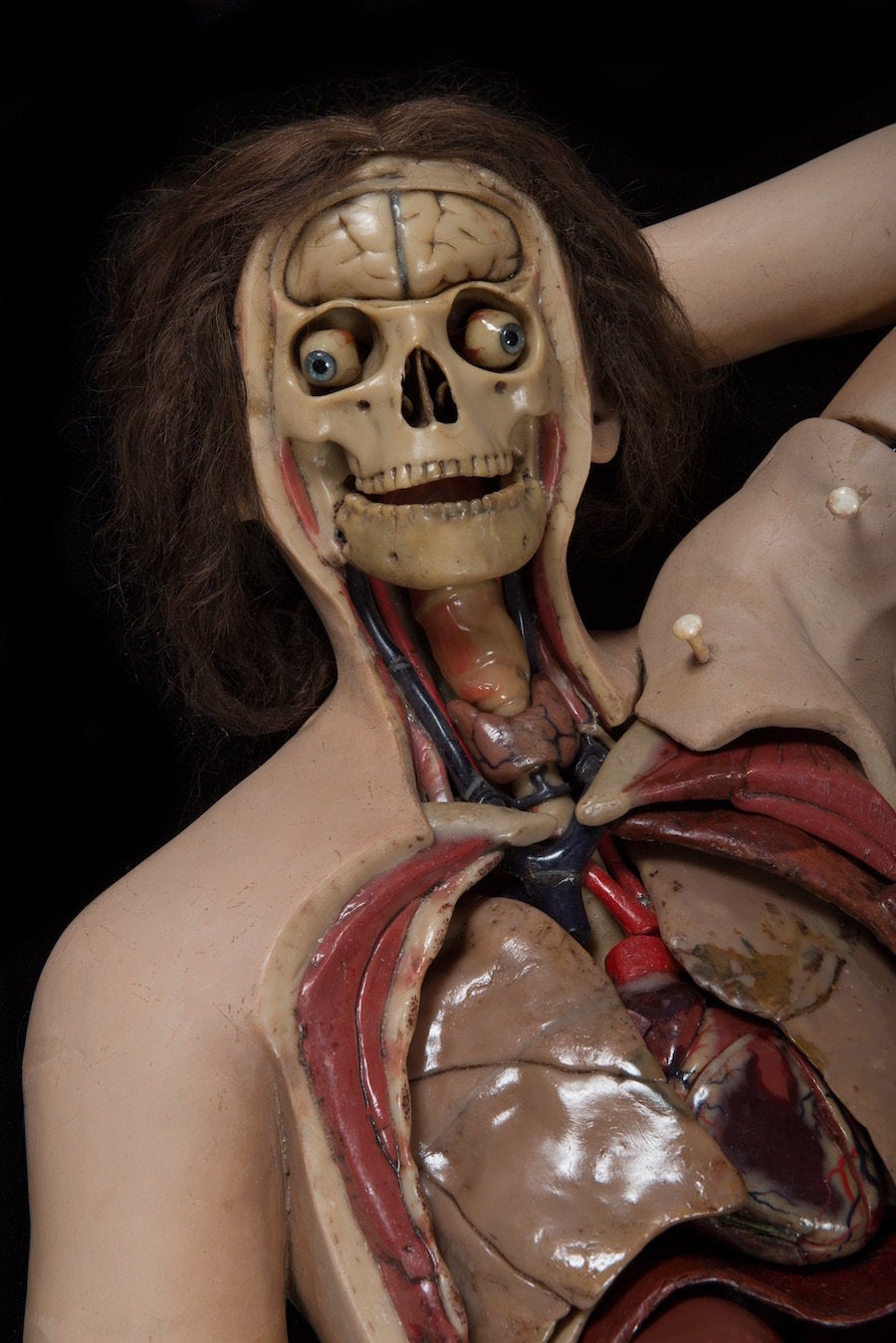
The passage has some heat to it, to be sure. But it outlines a different kind of passion than the one expressed between carnal lovers. "There is a very complicated relationship between mystical ecstasy and sexual ecstasy," Ebenstein said. At their core, sex, religion and death all symbolize portals of escape and transcendence, means of leaving the body and accessing what's beyond. There's a reason French philosopher Roland Barthes nicknamed the orgasm "the little death."
"All of these other things that produce an ecstatic experience are now condemned by the church, like sex and drugs," Ebenstein continued. "We still seek them out; it’s how secular people get as close to a mystical experience as they can." Back when Venus was born, however, religion was the primary means of losing oneself. "With the purely secular view of the world most of us have now, the only possible interpretation is a profane one."
Through the course of her book, Ebenstein conjures the knowledge systems of 18th-century Europe, helping to illuminate how such a disturbing tradition was once accepted without question. Even more curious than Venus herself, Ebenstein reveals, are the world views that brought her into being.
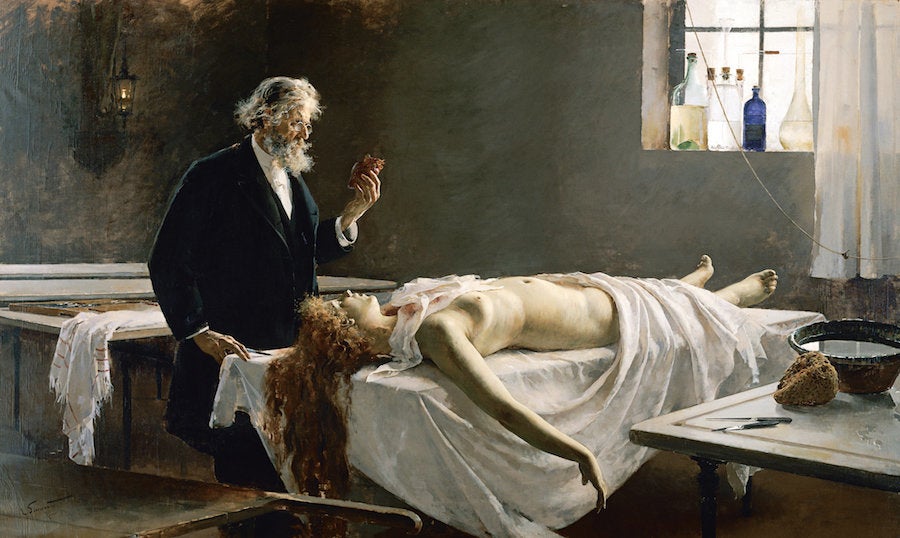
This is not to say there is nothing icky about the Anatomical Venus. Especially since there are very few examples of male figures occupying a similarly paradoxical space. Save for one model that Ebenstein saw on her pilgrimage, all of the male medical models were presented without skin -- not quite so idealized and sensual, unless you're into skinless dudes.
To explain the discord, Ebenstein mentions Ludmilla Jordanova's Sexual Visions, which describes the way men and women's bodies were interpreted, medically, at the time. "She argues that the male body was seen as canonical, and used to demonstrate the workings of things like musculature and the nervous system," Ebenstein explained. "What was interesting about the female body was how she wasn’t canonical. The focus is on what makes her different: her femininity, her ability to give birth, to produce milk."
Overall, The Anatomical Venus succeeds in tracing an ongoing, if not disturbing fascination with pretty, dead girls through various times, spaces and mediums. From Edgar Allen Poe's famous line, "The death then of a beautiful woman is, unquestionably, the most poetical topic in the world," to the eerie floating form in Sir John Everett Millais' "Ophelia," to Laura Palmer of "Twin Peaks."
So, yes, it appears the world has long possessed an unsettling obsession with objectifying women. Aestheticizing and fetishizing their lifeless forms is perhaps the most gruesome outcome of this fancy. There is certainly far more complexity to Venus' story, which Ebenstein unpacks in lush detail. But, in learning her story, the reader also becomes a complicit voyeur, still magnetized to the strange and horrifying beauty gazing lifelessly back at us from the page.
The Anatomical Venus by Joanna Ebenstein is published by Thames and Hudson.
